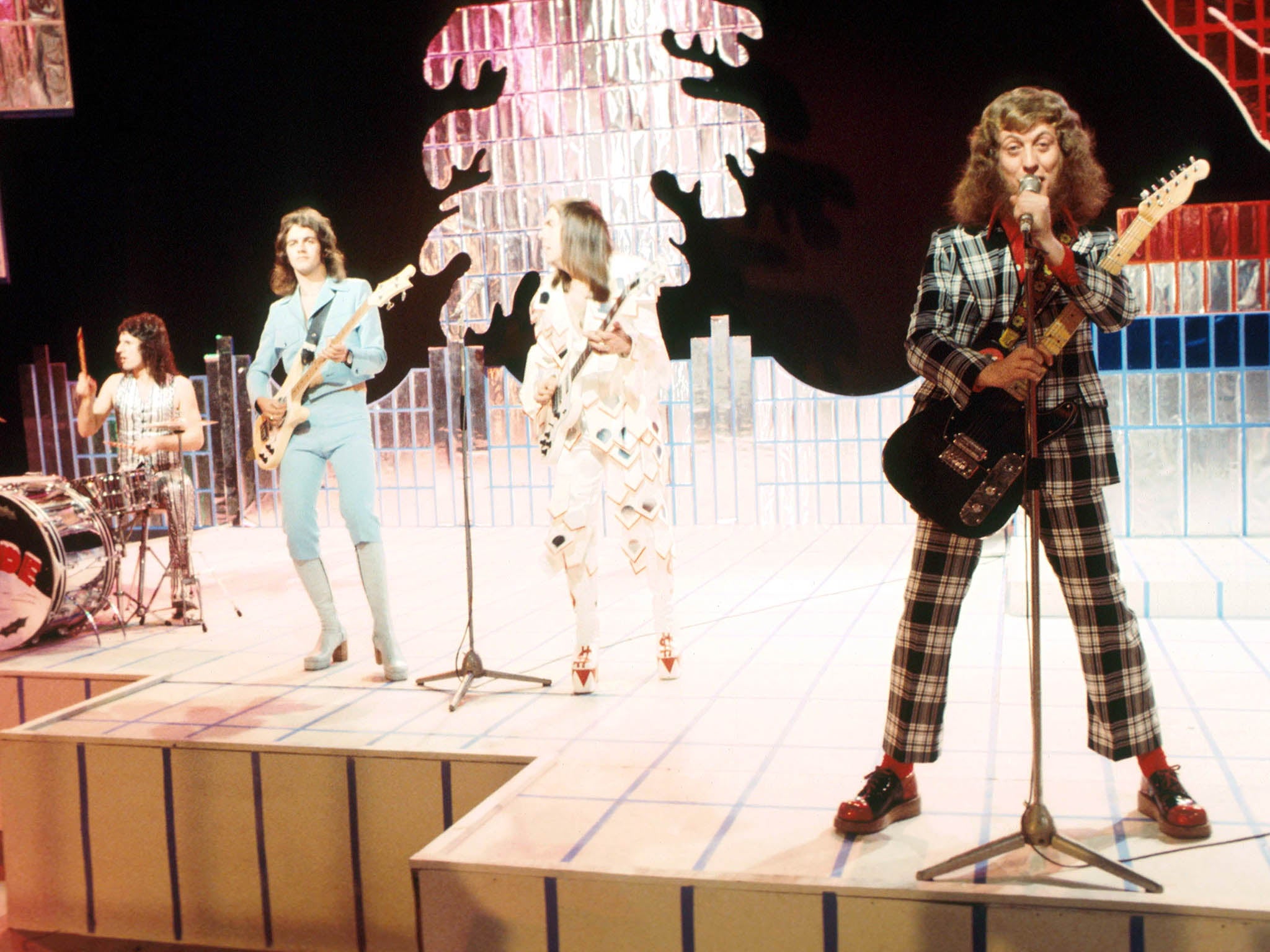The surprising glam rock roots of your favourite Christmas No 1
From Whamageddon to LadBaby, Marc Burrows tells the story of how a competition between two over-the-top Seventies icons established a December tradition that we still celebrate today


It’s been 50 years exactly since the first Christmas No 1; when glitter-encrusted Black Country rockers Slade got to the top with their stompy, rousing and very British hit “Merry Xmas Everybody”, beating glitter-encrusted Brummie rockers Wizzard, whose stompy, rousing and very British hit, “I Wish It Could Be Christmas Everyday” stalled at No 4. British readers will have heard both songs, repeatedly, every year of their lives, ever since.
OK, technically the “first ever UK Christmas No 1” was by American crooner Al Martino, in 1952. But I’m not counting that. Firstly, because there wasn’t a reliable national chart until the late Sixties, but more than that, Al Martino doesn’t get to be counted as a Christmas No 1 because the Christmas No 1 didn’t really exist until 1973. Up to that point, there was just… a No 1 that happened to be at Christmas.
That was desirable, sure: singles made great Christmas presents, so a hit in December came with huge sales. But in terms of a cultural moment? The concept just didn’t exist. Bookies weren’t taking bets on who would top the charts at Christmas. TV news programmes weren’t running bulletins updating viewers on the race. According to the OED, the term “Christmas No 1” didn’t even appear in print before 1973, though it’s been a ubiquitous part of the media landscape every December since then.
Join our commenting forum
Join thought-provoking conversations, follow other Independent readers and see their replies